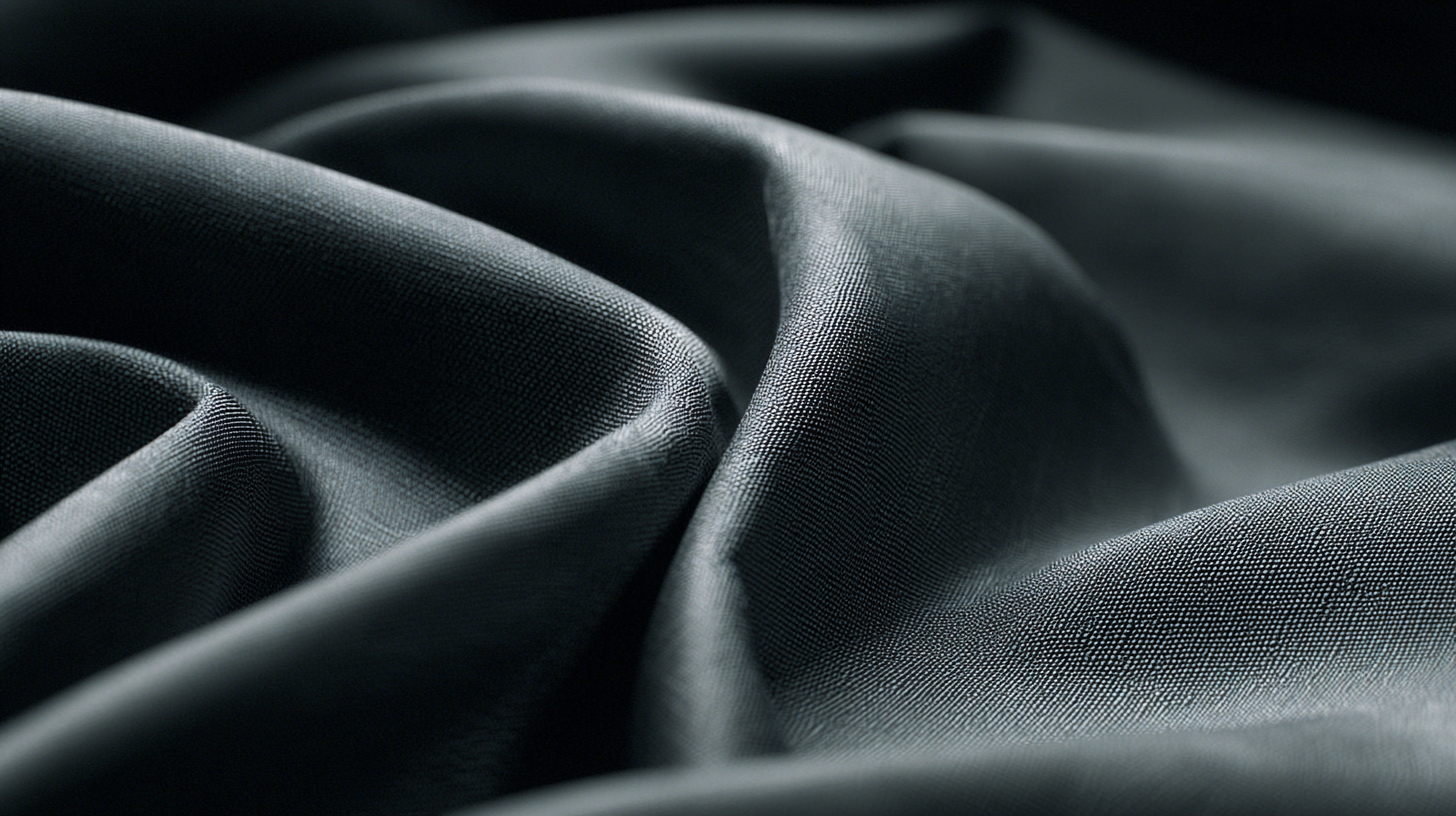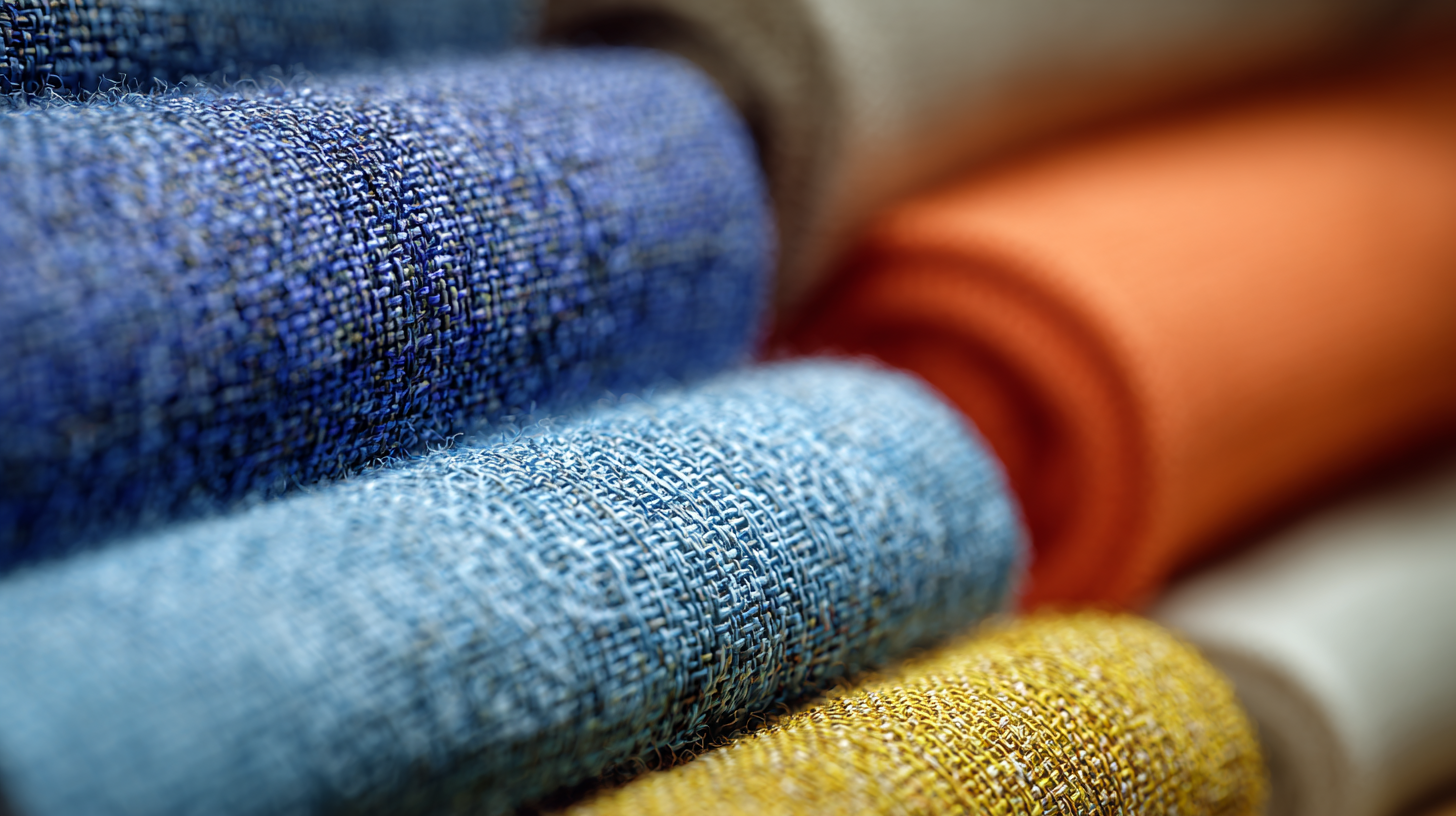As the fashion industry faces increasing scrutiny regarding its environmental impact, the conversation around sustainable fabric material innovations has never been more pressing. According to a report by McKinsey & Company, the fashion sector accounts for about 10% of global greenhouse gas emissions, primarily attributed to the production and consumption of textile materials. As consumers become more eco-conscious, brands are responding by exploring materials that not only reduce environmental degradation but also enhance the longevity and versatility of garments.
Sustainable fabric materials, such as organic cotton, Tencel, and recycled polyester, are gaining traction as they offer innovative solutions to age-old challenges faced by the industry. A survey conducted by GlobalData indicates that about 66% of global consumers are willing to spend more on sustainable brands, illustrating a clear shift in purchasing behavior and signaling the need for the industry to adapt. By embracing advancements in sustainable textile technology, fashion brands can reduce their carbon footprint and align themselves with evolving consumer expectations, thus paving the way for a more responsible and responsive industry.
In the quest to marry style with sustainability, industry leaders are increasingly investing in fabric material research and development, recognizing that the future of fashion hinges on our ability to innovate thoughtfully. By advancing sustainable fabric materials, we not only forge a path toward reducing waste but also redefine the aesthetics and functional capabilities of contemporary fashion, ultimately reshaping the industry's narrative for generations to come.

The fashion industry faces a critical crossroads as environmental concerns gain paramount importance. Biodegradable fabrics, emerging as a cornerstone of the sustainable fashion revolution, offer a promising alternative to conventional materials that often contribute to pollution and waste. Made from natural fibers or innovative bio-based chemicals, these fabrics break down more easily in the environment, reducing landfill accumulation and promoting a circular economy. As designers and brands turn their attention toward eco-friendly options, biodegradable textiles are setting new benchmarks for responsible production practices.
The integration of biodegradable fabrics in fashion not only addresses ecological issues but also aligns with shifting consumer preferences towards sustainability. Many consumers today prioritize ethical production and seek out brands that champion transparency and environmental stewardship. By investing in biodegradable materials, fashion brands can enhance their market appeal while actively participating in the global movement towards more sustainable practices. As innovations continue to flourish within the realm of biodegradable textiles, the potential for a greener fashion landscape becomes increasingly tangible, paving the way for a future where style and sustainability coexist harmoniously.
Innovative technologies are revolutionizing the textile production process, paving the way for eco-friendly clothing that meets the growing demand for sustainability in fashion. The global market for technical textiles is projected to reach approximately $239 billion by 2024, with an expected growth to $391.75 billion by 2032. This rapid expansion highlights the increasing investment in sustainable fabric innovations, including smart textile manufacturing systems that will exceed $4.7 billion by 2024, driven by technological advancements and shifting consumer preferences.
Moreover, the rise of eco-fiber markets also underscores this transformative shift, with organic cotton anticipated to grow from $1.13 billion in 2023 to nearly $2.59 billion by 2032. This trend reflects a broader commitment to sustainable practices within the textile industry, as global experts converge to discuss innovative strategies at events like the recent International Conference on Fashion and Sustainable Development. Focusing on integration and co-creation, these discussions aim to harness technology and culture, ensuring fashion's future aligns with eco-friendly principles.
The current landscape of sustainable fashion is significantly influenced by consumer behavior, with a clear shift in preferences towards eco-friendly fabric materials. According to a recent report by McKinsey & Company, 67% of consumers consider the use of sustainable materials as important when making fashion purchases. This growing awareness is driving brands to innovate and integrate sustainable practices into their supply chains, fostering a new era of textile production that aligns with environmental values.
Moreover, the Global Fashion Agenda's 2021 report highlights that brands that prioritize sustainability see higher customer loyalty rates, with 54% of consumers willing to pay a premium for products made with sustainable materials. As consumers become more educated about the environmental impact of their choices, they are actively seeking out brands that align with their values. This heightened consumer awareness and demand is not only reshaping the fabric market but also encouraging fashion companies to invest in innovative textile technologies, paving the way for a future where style and sustainability go hand in hand.

The fashion industry is increasingly prioritizing sustainable fabric innovations through collaborative efforts between brands and eco-conscious initiatives. As consumers, particularly from Gen Z and millennial demographics, demand greater transparency and ethical sourcing, fashion companies are compelled to adopt sustainable materials in their production processes. This shift not only addresses consumer concerns but also mitigates the environmental and social costs associated with fast fashion.
Collaborations are vital for the development of eco-friendly materials that can drive the industry towards a more sustainable future. Various eco-conscious initiatives focus on integrating bio-based fabrics and circular principles into the textile supply chain. By pooling resources and expertise, these partnerships aim to create impactful solutions for recycling and waste reduction, aligning with ambitious sustainability goals set for 2030. Through such collective efforts, the fashion industry can build consumer trust and diminish the prevalence of greenwashing, ultimately fostering a genuine commitment to sustainability.

The fashion industry is on the brink of a significant transformation as we shift towards a circular economy paradigm, which emphasizes sustainability and ethical practices in design. As consumers, particularly Gen Z and millennials, increasingly demand transparency and responsible sourcing, brands are compelled to adopt innovative materials that reduce environmental impact. Circular fashion emphasizes reusability and recycling, leading to new trends that prioritize ecological considerations in every phase of production, from material sourcing to end-of-life disposal.
Technological advancements are also playing a crucial role in this evolution. As fashion logistics evolve, AI-driven supply chains are optimizing the process of sourcing sustainable materials and managing waste. This integration of technology not only enhances efficiency but also reinforces the principles of the circular economy, enabling brands to create collections that are both stylish and eco-friendly. Moreover, the adoption of optimized eco-design approaches in sectors like jewelry underscores the industry's commitment to sustainability, pushing boundaries and redefining what it means to create responsibly. The path ahead signals a future where fashion and sustainability walk hand in hand, shaping a more conscious and innovative industry.
This chart illustrates the projected adoption rates of various sustainable fabric innovations in the fashion industry over the next five years. The data reflects trends towards circular economy principles, highlighting the increasing importance of eco-friendly materials.
